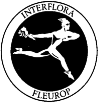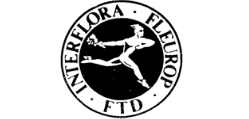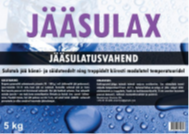We invite you to have a look at the 52nd issue of Turvaja newsletter.

Newsletter No. 39
March 2022
Decisions of the Estonian Industrial Property Board of Appeal
I Oppositions
Decision No. 2046-o
Earlier trademark
RIKEN
Opposed trademark
RISEN + kuju
Opposition to registration of the trademark “RISEN + device“ (accelerated procedure).
The opponent considers that the applicant’s mark “RISEN + device“ is so similar that there is a likelihood of confusion with the opponent’s earlier mark “RIKEN”. In addition, the applicant’s goods in Class 12 are identical to those covered by the opponent’s earlier mark.
The Patent Office forwarded the notice of filing of the opposition to the proprietor of the opposed trademark. The owner has not nominated their representative; thus, the Board applies the accelerated procedure. Under these circumstances, the Board will, in the final proceedings, grant the application without giving reasons for its decision, in so far as it is not manifestly unfounded.
The opposition was sustained.
Decision No. 1791-o
Earlier trademarks


INTERFLORA
Opposed trademark

Opposition to registration of the trademark „ interFlower + device“.
Similar elements must be given greater weight in the comparison of marks than different elements. Thus, the main focus is on the comparison between the word element “INTERFLORA” and the element “interFlower” in the contested mark.
The Board agrees with the opponents that the comparable word elements/components are visually similar. Although the comparable words do not have an unambiguous meaning, their identical initial component is familiar and understandable to the consumer; the end components -flora and -flower are also significantly close. Thus, the comparable words are also conceptually similar. A word element similar to the earlier mark is contained in the contested mark.
In light of the above, the Board agrees with the opponents that the trademarks are similar in their entirety. This similarity is emphasized by the similar goods and services covered by the marks, as well as by the long history and distribution of the earlier trademark.
The opposition was sustained.
Decision No. 1942-o
Earlier trademarks


Opposed trademark

Opposition to registration of the trademark „VOLTA 1 + device“.
The Board considers that the most prominent and dominant component of the comparable marks is the word element “VOLTA”, which appears in large block letters in both the opponent’s and the applicant’s marks, thus immediately attracting the consumer’s attention. The Board agrees with the opponent that the descriptive element “kvartal” (“quarter” in English) is not perceived by consumers as an element identifying the opponent’s services in Class 36. According to the Board, the numerical element “1” in the applicant’s mark is not conspicuous next to the dominant word “Volta” in block letters and might not be clearly perceptible as a number, since it could be seen as only having the effect of a rectangular figurative element.
In addition to the identity of the main word elements of the comparable marks, the marks are similar in terms of design. The fact that the word “VOLTA” is depicted in white in the opponent’s mark and in black in the applicant’s mark does not detract from the similarity in the overall impression given by the marks. Rather, it is possible that such a reversal of colours gives consumers the impression that one mark is a variation of another mark from the same source.
According to the Board, it is common ground that the services in Class 36 covered by the opponent’s and the applicant’s marks are similar and largely identical.
The Board considers that the mere fact that “VOLTA” can refer to, inter alia, the name of a street in Tallinn does not have the effect of excluding the distinctive character of that element. The distinctive character of the element “VOLTA” is further confirmed by the fact that the word mark “VOLTA” is currently registered in the name of the opponent in Class 36. Although this trademark is not an earlier right in relation to the contested trademark, it follows from the fact of registration of this trademark that the Patent Office did not find absolute circumstances precluding legal protection in relation to the word mark “VOLTA” in the trademark examination.
The opposition was sustained.
II Cancellations
Decision No. 1898-o
Opposed trademark

Application for the invalidation of the exclusive right of the proprietor of the trademark “JÄÄSULAX JÄÄSULATUSVAHEND + device”.
The proprietor was the first to apply for the contested mark and that mark was registered in their name. The opponent has not referred to any previous trademark registration in Estonia or abroad, nor have they claimed or proved the reputation of the object of the trademark rights allegedly attributed to them.
In addition, the proprietor has provided proof of requiring the opponent to cease using a mark similar to the contested trademark. The Board considers that those claims do not constitute evidence of bad faith on the part of the proprietor in seeking redress for the contested mark, but constitute a legitimate measure taken by the proprietor of the mark to exercise their exclusive right.
As the proprietor’s bad faith in submitting the application has not been proved in other respects, it cannot be considered bad faith that the proprietor registered a trade mark in their own name, the protection of which had not previously been sought by other persons and the ownership of which had not been proved to belong to any other individual.
The fact that the proprietor does not produce any goods does not in itself prove the bad faith of the proprietor, since the trademark proprietor must actually use the trade mark within five years of its registration.
The Board agrees with the proprietor that the trade name “JÄÄSULAX” is not a copyrighted work; however, the complete design of the trademark may constitute copyrighted work. Since the applicant has relied on copyright, it can be presumed that they acknowledge that the complete design of the mark is a work within the meaning of copyright and that there is no dispute in that regard.
However, the opponent has not shown when and on what basis the rights to the packaging design (and trade name) were transferred to them or to a third party. No copyright agreement has been submitted. Therefore, the opponent does not have the rights on which they rely when submitting this application.
It follows from the above that the opponent’s allegations of bad faith on the part of the proprietor are unfounded both in relation to the general bad faith intent and in relation to the alleged earlier trade mark and copyright rights.
The application was dismissed.
Decision No. 1872-o
Opponent’s trademark

Opposed trademark
Nordic Sped
Application for the invalidation of the exclusive right of the proprietor of the trademark “Nordic Sped”.
According to the Board, the applicant has not proved the use of the trademark “Nordic Spedition” in the period prior to the filing of the contested trade mark application, let alone its reputation.
On the basis of the evidence adduced, the Board does not consider it necessary to examine the similarity of the contested mark to the opponent’s trade name or the distinctive character of the opponent’s trade name nor to compare the services of the contested mark with the activity of the opponent, since planned activity alone cannot be relied on and only actual commercial use must be taken into account. The link between the business name and the specific business and activities was not properly disclosed at the time of the application.
The Board disregards and completely rejects the proprietor’s allegations concerning the investigation into the opponent’s business in criminal proceedings, as these circumstances are not relevant to the present case.
In assessing the parties’ submissions, the Board notes that the good faith of the owner is presumed and bad faith must be proved at the time of application. The Board acknowledges that, when applying for the contested mark, the proprietor may indeed have been aware of the opponent’s new business name, the start-up of his activities in the transport and forwarding business, and even the design used on his lorries and website. The opponent has thoroughly explained the reasons behind the business dispute concerning the parties and a third company. Although it is not inconceivable that the third company used both lawful and legally correct techniques that are questionable in relation to good commercial practice, these alleged retaliatory measures have not been documented, so they cannot be relied on as evidence to prove the proprietor’s alleged bad faith. Therefore, there is no significant link in the chain depicted by the opponent which links that commercial dispute, which the opponent apparently perceives as an attack on itself and its employees, and the application for the protection of the opposed trademark.
The application was dismissed.
The material provided in this newsletter is for informational purpose only and does not contain legal advice.
For additional information please contact our patent agency:
Patendibüroo TURVAJA OÜ
Liivalaia 22
Tallinn 10118
Estonia
We invite you to have a look at the 51st issue of Turvaja newsletter.
We invite you to have a look at the 50th issue of Turvaja newsletter.